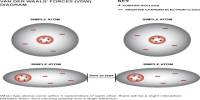Acoustic waves are a type of energy propagation method that uses adiabatic loading and unloading to move through a medium. Acoustic pressure, particle velocity, particle displacement, and acoustic intensity are all important quantities for describing acoustic waves. Acoustic waves have a characteristic acoustic velocity that depends on the medium through which they pass. Acoustic waves include audible sound from a speaker (waves that travel at the speed of sound through air), seismic waves (ground vibrations that travel through the earth), and ultrasound used for medical imaging (waves that travel through the body).
Acoustic waves are mechanical waves that travel through a medium such as air, water, or solid. They are also known as sound waves, and they are caused by a disturbance in the medium that causes a pressure variation.
Acoustic wave speed is determined by the properties of the medium through which they travel, such as density and elasticity. Acoustic waves, in general, travel faster through denser and more elastic materials.
Acoustic waves can be classified into two main categories: longitudinal waves and transverse waves. Longitudinal waves are characterized by particles moving parallel to the direction of wave propagation, while transverse waves are characterized by particles moving perpendicular to the direction of wave propagation.
Wave properties
Acoustic waves are mechanical waves that transmit energy through the movement of atoms and molecules. Acoustic waves transmit through liquids in a longitudinal manner (movement of particles parallel to the direction of propagation of the wave), whereas electromagnetic waves transmit in a transverse manner (movement of particles at a right angle to the direction of propagation of the wave). However, due to the absence of shear moduli in solids, acoustic waves transmit in both longitudinal and transverse directions.
Acoustic waves can be classified according to their frequency and wavelength. Infrasound waves, for example, have a frequency below the range of human hearing, whereas ultrasound waves have a frequency above it.
Application
Acoustic waves have a wide range of applications, from communication and entertainment to medical imaging and industrial testing. They can be used to transmit information through the air, to create musical sounds, to generate images of internal body structures, and to detect defects in materials.
Acoustic waves play an important role in many areas of science and technology, such as communication, sonar, medical imaging, and non-destructive testing.
















